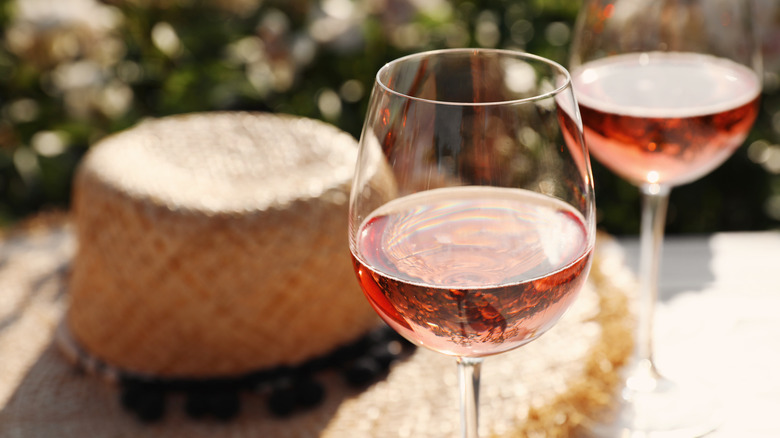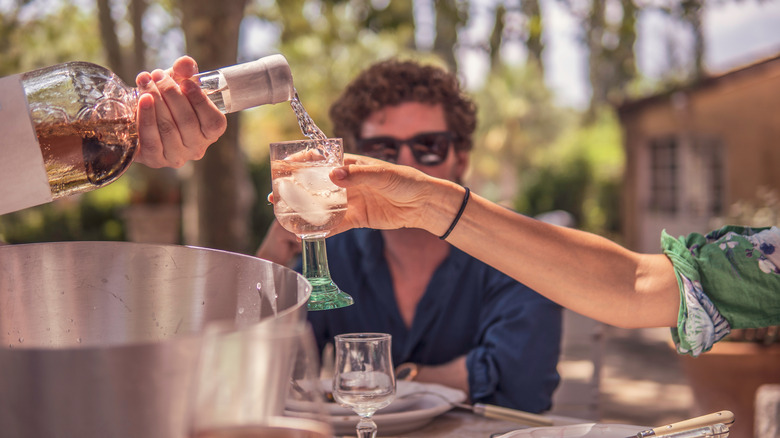What The Future May Look Like For Rosé
Yes way, rosé. The results are in, and flute-carrying folks across the nation are apparently thinking pink.
Rosé, a genre of wine made from the same grapes as red wine. As MasterClass explains, the difference is that rosé ferments for less time with the skins on. Unlike red, the grape skins of rosé are typically removed from the fermenting wine a day or two into maceration. By having less exposure to the skins, rosé acquires its lighter taste and mouthfeel compared to red wine — and also gains its signature pink color.
In 2019, WineBid had reported that rosé was the fastest-growing wine in the U.S., with sales increasing by an average of 40% per year over the decade. Eric Hemer, director of wine education at Southern Glazer's Wine & Spirits, told Bustle that rosé sales have increased by nearly 100 times since 2005, back when annual rosé sales were around 27,000 cases. Now, rosé is even outselling white wine in France, reports VinePair.
Pink is the new black
The pink wine typically enjoys a surge in popularity during warmer months: its crisp, airy taste makes rosé a favorite for outside sipping, per the BBC. (Plus, it's more likely to match your outfit during spring and summer.) But, recently, rosé is transcending the seasons. Speaking with Bustle, wine expert Eric Hemer says April 2022 outsold August 2021 for rosé sales — and August is typically rosé wine's most popular month.
Still, even a market as fashionable as sparkling wine isn't exempt from the influence of supply-and-demand. Wine data analytics platform BevAlc Insights predicts that as rosé becomes more and more popular, fans should expect to see the price go up. The price of a bottle via wine purveyor Drizly, BevAlc says, increased from $22.60 in 2020 to $27.30 in 2021. During this time, rosé sales also demonstrated a substantial year-over-year growth rate of 47%.
Given these numbers of growth, don't be surprised when your favorite pink aperitif starts rocking a pretty hue and a higher sticker price to boot. (To offset the cost, try using rosé as a base for a cocktail, like a rosé mojito or sangria with strawberries.)

